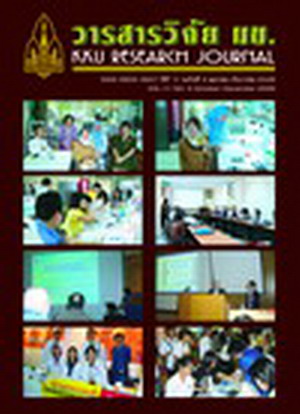Using Zeolite and Ugraded Sand to Remove Ammonia Nitrogen From Swine Wastewater(Thai)
Main Article Content
Abstract
The purpose of this research was to study the ammonia nitrogen removal efficiency from effluent UASB of swine wastewater. Five cylindrical acrylic columns with inside diameter of 2.5 cm. and 100 cm. height were constructed as the reactors. The ungraded sand was mixed with zeolite at various ratios for this experiment. The ratio of the ungraded sand and zeolite in columns 1, 2, 3, 4 and 5 were 0:80, 30:50, 40:40, 50:30 and 80:0, respectively. The experiment was divided into 2 steps. The first step was to use the synthetic wastewater to investigate the optimum pH for removing ammonia nitrogen. It was found that the best efficiency of ammonia nitrogen reduction was at pH 6.0. The swine wastewater from UASB was collected to study in the second step. Two sets of experiments were conducted in the continuous flow columns. The pH of wastewater was adjusted to 6.0 in the experimental set 1 while the experimental set 2 was designed at actual pH (pH = 7.4). The flow rate was set at 5 ml./ min. Every 250 ml. of the wastewater which passed through the column was collected to examine the concentration of ammonia nitrogen. The results indicate that the adjusted pH wastewater had higher ammonia nitrogen removal efficiency than that without pH adjustment. The highest ammonia nitrogen removal efficiency was found in column 1, ungraded sand and zeolite at the ratio 0:80. The highest nitrogen removal efficiency was 74.04% when the first 250 ml volume of wastewater passed through the column.


